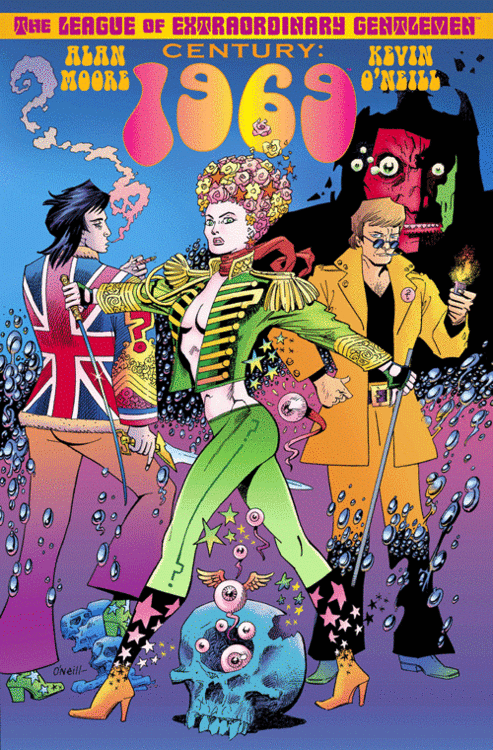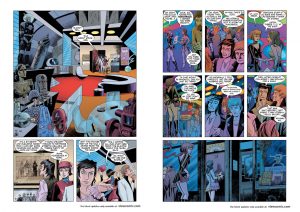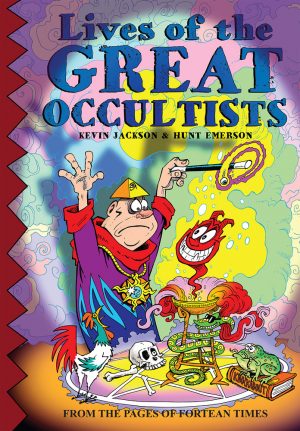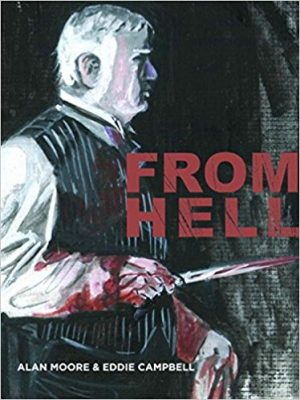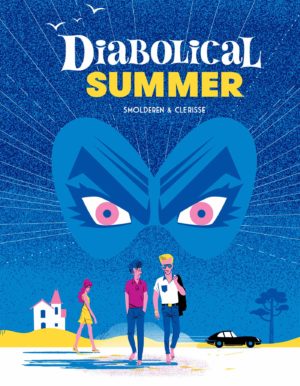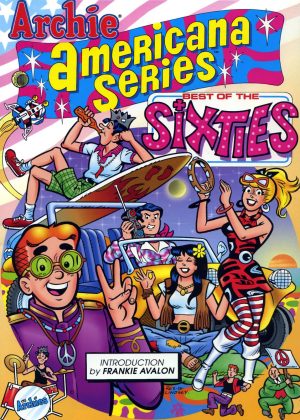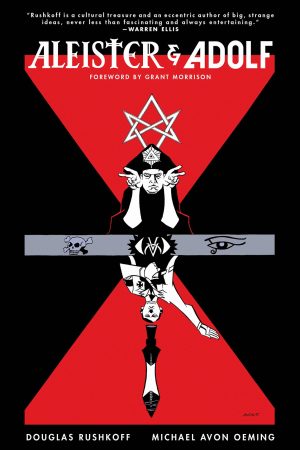Review by Graham Johnstone
The League of Extraordinary Gentlemen is a massively ambitious project. Initially assembling a team of proto-superheroes from Victorian fiction, creators Alan Moore and Kevin O’Neill expanded the concept to a unified world where all fictional characters can interact. The story began in 1898, and concludes in the 21st Century, so creating an alternate history of Britain (and beyond), filtered through its fictional representations.
Third volume Century, lives up to its title, with this instalment bookended by episodes in 1910, and 2009. This middle chapter wisely avoids the chronological middle of that period, already thoroughly covered in League ‘sourcebook’ The Black Dossier. 1969, is a brilliant choice, marking the end of the 1960s, as a decade and a counter-cultural phenomenon. A pivotal moment for Britain, then, to include in this alternative history.
Century: 1910 set up the plot by occultist Oliver Haddo and acolytes, to create a “Moon-Child” ushering in “a strange and terrible new aeon…”. By 1969, Mina Murray (aka Harker, from Dracula), and colleagues have long since parted company with their erstwhile bosses at British Intelligence. They have consequently relocated from the British Museum, to seminal fictional utopia The Blazing World and now take direction from Shakespeare’s sorcerer Prospero, who senses Haddo’s scheme coming to fruition. This prompts the group’s survivors Murray, explorer Allan Quatermain, and immortal transexual Orlando, to reconvene in ‘Swinging’ London. Their quest propels a fascinating travelogue of Britain at the end of an era.
Moore’s re-appropriation of other fictions, is the series’ unique selling point, and for anyone interested in the era, this is a spotters delight. Moore’s references are witty: counter-cultural hub the UFO club, for example, becomes ‘The Flying Cylinder’ after H.G. Wells’ alien craft in Volume 2. Other highlights include Michael Moorcock’s Jerry Cornelius, and Moorcock and Iain Sinclair’s ‘Prisoner of London’, both as guides for the group’s quest. The treatment of the source material, is by turns insightful, satirical, respectful, and, here, affectionate. Moore extends his re-appropriations from written to cinematic fictions, including contemporary release Performance. To that film’s meeting of gang culture and counter-culture, Moore adds the occult strand running through Century.
Moore blurs fictional and factual 1969s, with the opening scene channelling the swimming pool death of Rolling Stones founder Brian Jones. It’s an apt symbol of the disintegration of the Sixties’ technicolour dream. Moore follows through, making his versions of the Stones’ singer, and memorial concert for their bandmate, the subject and setting of the Haddo cult’s scheme. This artful weaving of fact with both ‘found’ and original fiction becomes even more intricate. Haddo, is the fictional creation of Somerset Maugham, but based on real life occultist Aleister Crowley, who in turn wrote a riposte to Maugham’s portrayal, under the pseudonym… Oliver Haddo.
So what is all this erudition worth, beyond another reminder of Moore’s phenomenal intellect? It’s evidence of his diligence in creating this super-concentrated snapshot of Britain at the death of the Sixties. It’s all here: utopian dreams; sexual liberation; transcendence through drugs and mysticism; cynical opportunists; and the ways it can all go terribly wrong. As with any fiction, there’s no need to understand all the writerly methodology to appreciate the result of a high-stakes story and compelling view of a time and place.
O’Neill’s art is exceptional throughout the series, but (like Moore) a teenager in the 1960s, he’s in his element, revelling in the period accoutrements, festival scenes, and a bad trip. The brilliantly realised psychedelic effects, highlight the contributions of letterer/typographer Todd Klein, and colourist Ben Dimagaliw.
The next and final book of Volume 3 advances to the ‘present’ in Century 2009, or alternatively all are combined as Century.
